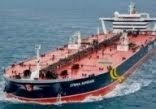Total, operator of Block 17 in Angola, has started up CLOV, a major deep offshore development located 140 km offshore Luanda, in line with the initial project schedule.
With a production capacity of 160,000 bpd, CLOV will develop proven and probable reserves of over 500 MMbbl. After Girassol, Dalia and Pazflor, CLOV is the fourth FPSO unit on Block 17.
"CLOV will contribute to increasing the Block 17 production to 700,000 bpd while also generating significant free cash flow for the Group. Block 17 will therefore become Total’s most prolific production site and bring us a step closer to achieving our production potential of 3 MMbpd by 2017,” commented Arnaud Breuillac, President Exploration & Production at Total.
Developing four fields (Cravo, Lirio, Orquidea and Violeta), the project comprises 34 wells and 8 manifolds connected by 180 km of subsea pipelines to an FPSO unit at water depths of 1,100 to 1,400 m. Measuring 305 m long and 61 m wide, the FPSO has a storage capacity of 1.8 MMbbl of oil. The gas produced on CLOV will be exported via a subsea line to the onshore Angola LNG liquefaction plant.
Angola
A subsea multiphase pump system will be used deep offshore to enable production of two different oil qualities from the oligocene reservoirs and the more viscous miocene reservoirs. A first for Total at this depth, this system will be used to boost the commingled fluid and enhance oil recovery.
The FPSO design minimizes its environmental footprint, with zero flaring under normal operating conditions and an “all electric” concept to increase on-site energy efficiency by producing only the quantity of electricity required to operate the facilities.
As part of Total’s commitment to increasing local content in its projects, a significant part of the CLOV development work was carried out in Angola. This represents more than 10 million man hours achieved in-country to complete fabrication and assembly on Angolan yards.
Total operates the block with a 40% interest, and its partners are Statoil (23.33%), Esso Exploration Angola (Block 17) Limited (20%) and BP (16.67%). Sonangol is the concessionaire for Block 17.
Providing useful resources, articles and writings on crude oil, other petroleum products, energy and gas. By Giftelyon Multi-Sevices Int'l Ltd and services, UK, online.

 Giftelyon Multi Sevices Int'l Ltd is a leader in the of Nigerian Bonny Light Crude Oil (BLCO) sales market. As a privately held company, Giftelyon Multi-Sevices Int'l Limited is committed to and is focused on delivering reliable services to all her clients.
Giftelyon Multi Sevices Int'l Ltd is a leader in the of Nigerian Bonny Light Crude Oil (BLCO) sales market. As a privately held company, Giftelyon Multi-Sevices Int'l Limited is committed to and is focused on delivering reliable services to all her clients.  Giftelyon Multi Sevices International Ltd has an excellent track record of reliability in the supply of Bonny light crude oil, BLCO. We protect our buyers with 2% Performance Bond while we also expect protection from our customers with bank instrument from the world's top banks. We deliver on TTO, TTT, CIF and FOB basis.
Giftelyon Multi Sevices International Ltd has an excellent track record of reliability in the supply of Bonny light crude oil, BLCO. We protect our buyers with 2% Performance Bond while we also expect protection from our customers with bank instrument from the world's top banks. We deliver on TTO, TTT, CIF and FOB basis.
